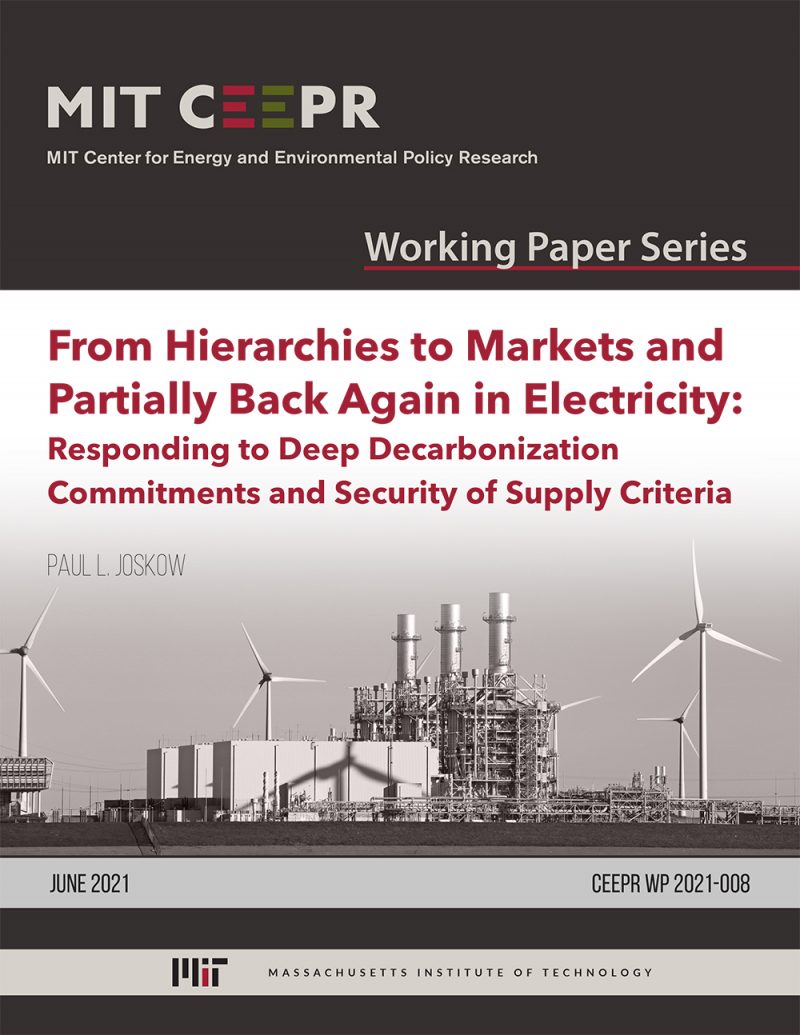From Hierarchies to Markets and Partially Back Again in Electricity: Responding to Deep Decarbonization Commitments and Security of Supply Criteria
Paul L. Joskow
June 2021
Electric power sectors around the world have changed dramatically in the last 25 years as a result of sector liberalization policies. Many electricity sectors are now pursuing deep decarbonization goals which will entail replacing dispatchable fossil generation primarily with intermittent renewable generation (wind and solar) over the next 20‐30 years. This transition creates new challenges for both short‐term wholesale market design and investment incentives consistent with achieving both decarbonization commitments and security of supply criteria, especially in the absence of carbon emissions prices that are compatible with decarbonization commitments. Thinking broadly about the options for institutional change from a Williamsonian perspective ‐‐‐ thinking like Williamson ‐‐‐ provides a useful framework for examining institutional adaptation. Hybrid markets that combine “competition for the market” that relies on competitive procurement for long‐term PPAs with wind, solar, and storage developers, ideally in a technology neutral fashion, and “competition in the market” that relies on short‐term markets designed to produce efficient and reliable operations of intermittent generation and storage is identified as a promising direction for institutional adaptation. Many auction, contract, and market integration issues remain to be resolved.



